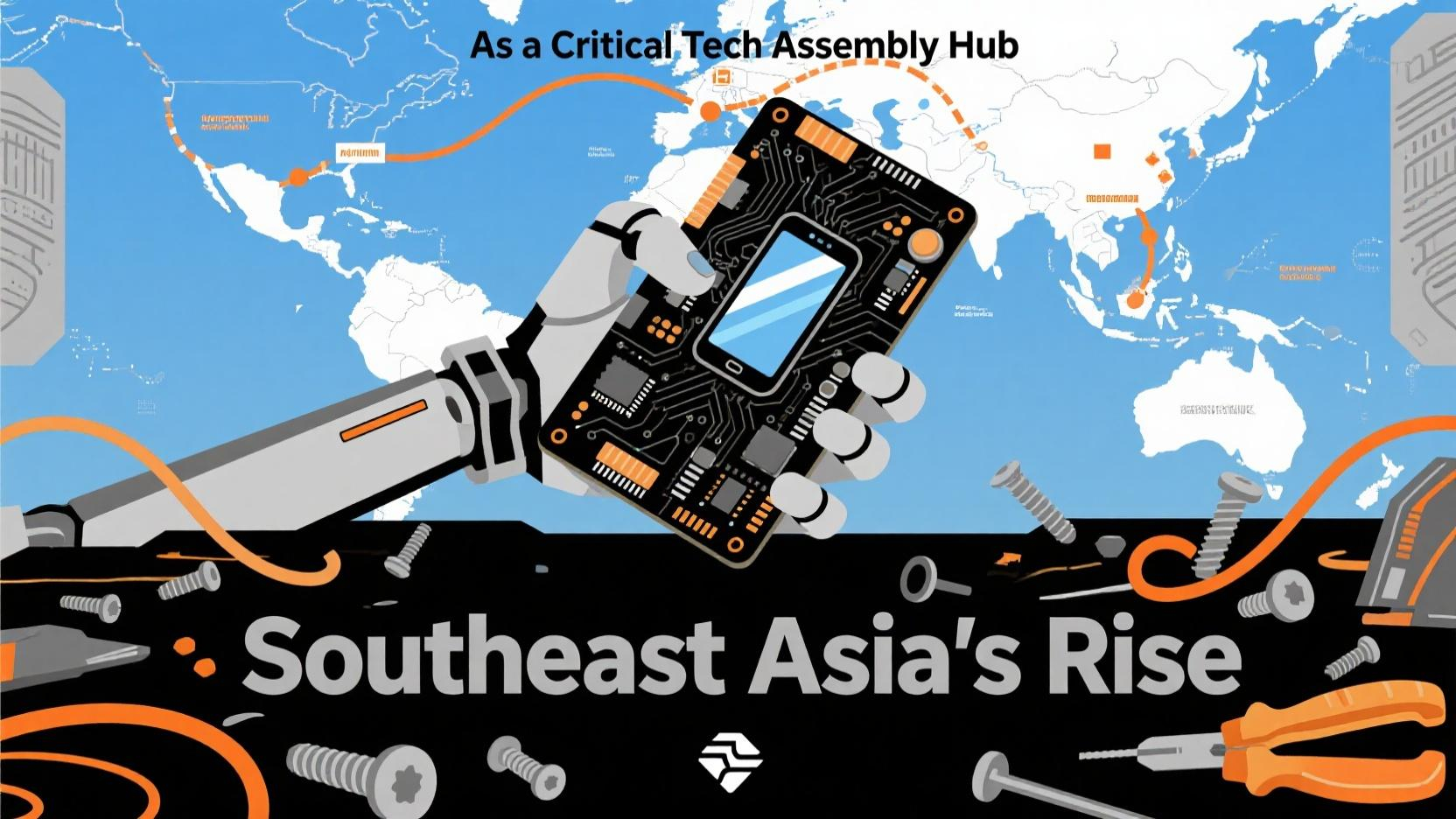Overview:
As the U.S.–China decoupling accelerates, Southeast Asia is emerging as a major player in global tech supply chains. Once known mainly for low-end manufacturing, countries like Vietnam, Thailand, and Malaysia are now central to the assembly of semiconductors, smartphones, and solar panels.
Trends in Motion:
- Apple shifted more iPad and MacBook assembly to Vietnam
- Intel is investing $7 billion to expand packaging operations in Malaysia
- Thailand is targeting EV supply chains with tax incentives and free-trade zones

Why It Matters:
Multinational companies are adopting “China+1” or “China+2” strategies to diversify risk. This is not just about cheaper labor—it’s about regional stability, trade agreements, and logistics proximity.
Regional Coordination:
ASEAN nations are also moving toward cross-border digital trade frameworks and supply chain digitization via blockchain, enabling better transparency and speed.
Challenges Ahead:
- Skilled labor shortages in high-tech sectors
- Infrastructure gaps in inland provinces
- Rising wage inflation as FDI pours in
Takeaway:
Southeast Asia isn’t just a detour from China—it’s becoming a permanent waypoint in the next-generation tech supply chain.
